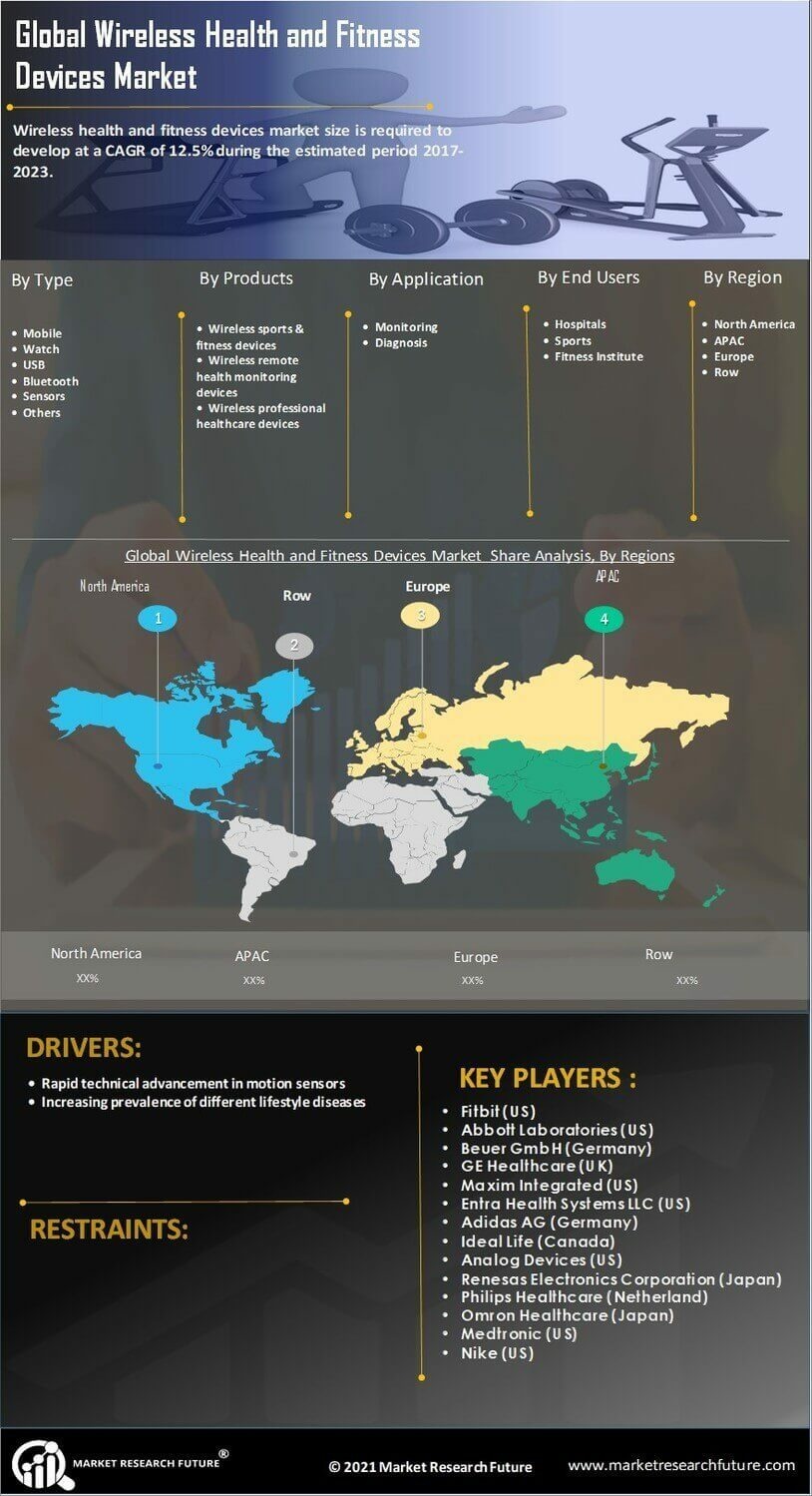Rising Health Awareness
The increasing awareness regarding health and fitness among individuals appears to be a primary driver for the Wireless Health and Fitness Devices Market. As more people recognize the importance of maintaining a healthy lifestyle, the demand for devices that monitor health metrics has surged. Reports indicate that the market for wearable fitness technology is projected to reach approximately 62 billion dollars by 2025. This trend suggests that consumers are actively seeking solutions that provide real-time data on their physical activity, heart rate, and other vital signs. Consequently, manufacturers are innovating to meet this demand, leading to a proliferation of devices that cater to various fitness levels and health needs. The Wireless Health and Fitness Devices Market is thus positioned to benefit from this heightened focus on personal health.
Growing Aging Population
The growing aging population is a significant driver for the Wireless Health and Fitness Devices Market. As the global demographic shifts towards an older population, there is an increasing need for health monitoring solutions that cater specifically to the elderly. Devices that track chronic conditions, medication adherence, and physical activity levels are becoming essential tools for this demographic. Market data suggests that the segment of health wearables designed for seniors is expected to grow substantially, reflecting the need for solutions that promote independent living and enhance quality of life. This trend indicates that manufacturers are likely to focus on developing user-friendly devices that address the unique health challenges faced by older adults.
Technological Advancements
Technological advancements in wireless communication and sensor technology are likely to propel the Wireless Health and Fitness Devices Market forward. Innovations such as Bluetooth Low Energy and advanced biometric sensors have enhanced the functionality and accuracy of health monitoring devices. These advancements enable seamless data transmission and improved user experience, making devices more appealing to consumers. Furthermore, the integration of advanced algorithms for data analysis allows for personalized health insights, which can motivate users to engage more actively with their fitness regimens. As a result, the market is witnessing a steady influx of new products that leverage these technologies, potentially increasing market penetration and consumer adoption rates.
Rise of Fitness Enthusiasts
The rise of fitness enthusiasts and the growing trend of fitness culture are contributing to the expansion of the Wireless Health and Fitness Devices Market. With an increasing number of individuals engaging in fitness activities, there is a heightened demand for devices that can track performance metrics and provide feedback. This trend is evidenced by the proliferation of fitness apps and wearables that cater to various sports and activities. Market analysis shows that the segment of fitness trackers is expected to witness robust growth, driven by consumers seeking to optimize their workouts and achieve personal fitness goals. Consequently, manufacturers are likely to innovate and diversify their product offerings to capture this enthusiastic consumer base.
Increased Focus on Preventive Healthcare
An increased focus on preventive healthcare is emerging as a crucial driver for the Wireless Health and Fitness Devices Market. As healthcare systems worldwide shift towards preventive measures, individuals are becoming more proactive in managing their health. This shift is reflected in the growing adoption of devices that facilitate early detection of health issues and promote healthier lifestyles. Market data indicates that preventive health technologies are gaining traction, with consumers increasingly investing in devices that provide insights into their health status. This trend suggests that the Wireless Health and Fitness Devices Market is likely to see continued growth as more individuals prioritize preventive care and seek out innovative solutions to monitor their health.

















Leave a Comment